Don't wanna be here? Send us removal request.
Photo

Before The Pharaohs: The Evidence for Advanced Civilisation in Egypt’s Mysterious Prehistory
There is no other place on Earth like Egypt’s Giza Plateau. Anyone with even a slight interest in history and civilisation is aware of this fact. For on this plateau there stands the Great Pyramids and their sculpted guardian, the Great Sphinx.
Although there are plenty of theories, no one really knows who built the Giza Pyramids or carved the Sphinx, or when they were constructed. Any statement as to who built them, or when they were built, is pure theory. In light of all the various theories concerning these mysterious structures, I don’t think the theoretical nature of the pyramid builders can be emphasised enough.
What stands out at Giza more than anything else is not only the magnitude of the construction of the pyramids, but the internal design of the Great Pyramid; three chambers, of which one is subterranean, and their connecting passageways. The passageway that leads to the so-called King’s Chamber rises to a height of thirty-six feet! On the other hand, all other passageways were not built tall enough to accommodate the average man or woman.
There is also the unique configuration of the King’s Chamber as well as the Queen’s Chamber. Both of these contain two shafts, one on each side of the chamber. The Queen’s Chamber contains a corbelled niche built into its east wall, and the King’s Chamber’s ceiling is composed of five granite slabs stacked one atop the other. Why these chambers were constructed in this manner is unknown.
The official theory is that the pyramids were tombs, and that King Khufu kept changing his mind where his burial chamber was to be placed; thus, the reason for three chambers in the Great Pyramid. However, in comparison to typical Egyptian burial methods (the mastaba and the tombs in the Valley of the Kings), the Giza pyramids, and particularly the Great Pyramid, do not fair well within the Egyptian concept of a tomb.
The Ancient Egyptian View of the Afterlife
The Egyptians believed in an afterlife, and the tomb was an important part of that belief. As the tomb of King Tutankhamun testifies, the deceased’s chamber of internment was to be decorated with art and filled with that person’s possessions. Why they practiced this ritual was not for superstitious reasons, as one might suspect. It was practical, according to their beliefs, and aimed at preventing that person’s energy (spirit) from being re-absorbed into Nature’s spiritual force.
For the ancient Egyptians, Ba animated a living person, whereas Ka was the energy emanating from that person. Although not an exact analogy, the Ka and the Ba are what traditional Western thought might refer as spirit and soul. Another important aspect of Egyptian belief represented immortality, the ankh, depicted as the crested ibis.
The Ka, represented in art by up-stretched arms, was believed to be the part of man’s consciousness and energy (man’s spirit or inner quality) that related to the immediate world. It is the part of us connected to the physical body; where it lived, its possessions, as well as the people he or she was acquainted with. The Ka can be likened to one’s personality, which upon death is separated from the body, and naturally seeks a way to once again take form. The Ba, represented by a winged human head, or sometimes a human-faced bird, represented the part of consciousness that is immortal.
When someone passed away, it was their goal as well as the hope of the family, that the deceased’s Ka would seek a way to remain united with their Ba. To help accomplish this eternal union, the possessions of the deceased were gathered together by the family and placed in the tomb with the mummified body. Mummification prevented the body from decomposing and returning to the soil of the Earth, whereas the tomb, with the deceased’s possessions, served as a ‘home’ for the Ka. As a result, the Ka maintained its identity in the spiritual world and could seek out its Ba in order to achieve ankh, which resulted in the resurrected and glorified form of the deceased beyond the limits of an earthly realm.
Pyramids and the Concept of the Egyptian Tomb
Like the pharaonic tombs carved into the Valley of the Kings, royal mastabas built during the early dynasties – some as early as 3000 BCE – were also designed with ‘home’ in mind, as that home relates to a person’s Ka. Case in point: from the sixth dynasty, Mereruka’s mastaba was crafted in mansion-like proportion with thirty-two rooms and adorned with statues and art depicting, for example, scenes of wildlife along the Nile River.
The traits of Egyptian domestic life, so beautifully incorporated into the design of their tombs, are not found in the Giza pyramids. The Giza pyramids contain no art or hieroglyphics of any kind, very uncharacteristic of Egyptian tombs. So why is it the case that the Giza pyramids are generally considered to be tombs of fourth dynasty Pharaohs? The reason is because of an association of the Giza complex with another development ten miles south at Sakkara where the Egyptians really did build tombs as pyramids.
At Sakkara in 1881, the French Egyptologist, Gaston Maspero(1846–1916) discovered that the subterranean chamber of the Pepi I Pyramid (second ruler of the sixth dynasty) was engraved with hieroglyphics. Over the course of subsequent explorations, it was discovered that a total of five pyramids at Sakkara also contained inscriptions, from the fifth, sixth, seventh, and eighth dynasties of the Old Kingdom. In 1952, Dr. Samuel A.B. Mercer (1879–1969), Professor of Semitic Languages and Egyptology at the University of Toronto, published a complete English translation of “The Pyramid Texts” in a volume of the same name. According to Mercer, The Pyramid Texts contained ‘words to be spoken’ concerning funerary ritual, magical formulae, and religious hymns, as well as prayers and petitions on behalf of the deceased king.1
With the pyramids at Sakkara being confirmed as tombs the associative logic came to be that all pyramids must be tombs. Furthermore, since there are two cemeteries (mastaba fields) to the east and west of the northernmost Giza pyramid, assuming that all pyramids are tombs was a likely conclusion. However, the condition of the Sakkara pyramids – most of which are believed constructed after the Giza pyramids – poses serious problems in this logical association. Of the pyramids at Sakkara only Djoser’s ‘Step Pyramid’ is in good condition, although not really a true pyramid. (The Step Pyramid was originally a mastaba that was modified into a pyramid.) All other pyramids at Sakkara, most of which belong to the fifth and sixth dynasties are in ruins today and resemble mounds of rubble.
According to a consensus of Egyptologists, Djoser’s Step Pyramid at Sakkara was constructed during the third dynasty and was the forerunner to the fourth dynasty pyramids on the Giza Plateau. After pyramid development at Giza, for whatever reason, the focus of pyramid building shifted back to Sakkara.
Pyramids and the Concept of the Egyptian Tomb
Like the pharaonic tombs carved into the Valley of the Kings, royal mastabas built during the early dynasties – some as early as 3000 BCE – were also designed with ‘home’ in mind, as that home relates to a person’s Ka. Case in point: from the sixth dynasty, Mereruka’s mastaba was crafted in mansion-like proportion with thirty-two rooms and adorned with statues and art depicting, for example, scenes of wildlife along the Nile River.
The traits of Egyptian domestic life, so beautifully incorporated into the design of their tombs, are not found in the Giza pyramids. The Giza pyramids contain no art or hieroglyphics of any kind, very uncharacteristic of Egyptian tombs. So why is it the case that the Giza pyramids are generally considered to be tombs of fourth dynasty Pharaohs? The reason is because of an association of the Giza complex with another development ten miles south at Sakkara where the Egyptians really did build tombs as pyramids.
At Sakkara in 1881, the French Egyptologist, Gaston Maspero(1846–1916) discovered that the subterranean chamber of the Pepi I Pyramid (second ruler of the sixth dynasty) was engraved with hieroglyphics. Over the course of subsequent explorations, it was discovered that a total of five pyramids at Sakkara also contained inscriptions, from the fifth, sixth, seventh, and eighth dynasties of the Old Kingdom. In 1952, Dr. Samuel A.B. Mercer (1879–1969), Professor of Semitic Languages and Egyptology at the University of Toronto, published a complete English translation of “The Pyramid Texts” in a volume of the same name. According to Mercer, The Pyramid Texts contained ‘words to be spoken’ concerning funerary ritual, magical formulae, and religious hymns, as well as prayers and petitions on behalf of the deceased king.1
With the pyramids at Sakkara being confirmed as tombs the associative logic came to be that all pyramids must be tombs. Furthermore, since there are two cemeteries (mastaba fields) to the east and west of the northernmost Giza pyramid, assuming that all pyramids are tombs was a likely conclusion. However, the condition of the Sakkara pyramids – most of which are believed constructed after the Giza pyramids – poses serious problems in this logical association. Of the pyramids at Sakkara only Djoser’s ‘Step Pyramid’ is in good condition, although not really a true pyramid. (The Step Pyramid was originally a mastaba that was modified into a pyramid.) All other pyramids at Sakkara, most of which belong to the fifth and sixth dynasties are in ruins today and resemble mounds of rubble.
According to a consensus of Egyptologists, Djoser’s Step Pyramid at Sakkara was constructed during the third dynasty and was the forerunner to the fourth dynasty pyramids on the Giza Plateau. After pyramid development at Giza, for whatever reason, the focus of pyramid building shifted back to Sakkara.
The Great Pyramid – A Device
The easily observable and obvious differences in the Giza pyramids and the Sakkara pyramids, which were all supposed to have been built during the same era, are a problem. Clearly, the construction techniques, as well as materials, for the Giza pyramids were different than those at Sakkara, or else we would expect pyramids at both sites to have stood the test of time in a similar manner. They did not. The important point is why. Did the engineers and construction workers of the Old Kingdom not pass along their methods from the fourth to the fifth dynasty? It seems they did not, which is a very curious occurrence given the stability of Egyptian civilisation. It may also be the case that the fourth dynasty Egyptians did not build the Giza pyramids.
No other pyramid in Egypt (the world for that matter) is like the Giza pyramids, and in particular the Great Pyramid. Additionally, there is no direct evidence to support the claim that the Great Pyramid, or the other Giza pyramids were tombs. Nor is there any record left by its builders as to what it was for or when it was built. This creates a problem of explanation. If the Great Pyramid was not a tomb, then what was it? A mystical temple for initiation ritual, or a public works project designed to unify the country? Or, was it something else entirely? Theories are abundant, but the only theory I am aware of that covers all aspects of the Great Pyramid’s interior design, is Christopher Dunn’s theory that it was a device. According to Dunn, the Great Pyramid was a machine for producing power by converting tectonic vibration into electricity.
There are a number of reasons to accept Dunn analysis. First, he explains the interior design and all other evidence within the Great Pyramid in a cohesive manner. Second, he demonstrates the technical skills required to accomplish precision construction. Third, Dunn’s expertise and career is in the precision fabrication and manufacturing industry, which makes him uniquely qualified to express a professional opinion on the techniques and tools of the Giza pyramid builders.
The fact is, modern construction companies could not build the Great Pyramid today without first inventing specialised tools and techniques in order to deal with blocks of stone that vary in weight from ten to fifty tons. Such an endeavour would be on a magnitude equivalent to building a hydroelectric dam or a nuclear power station requiring tens of billions of dollars in resources. Although our modern economy is different than that of the ancient world, the resource required now as compared to then is the same! The stone must be quarried and moved and the workers must be paid. The fact that an extremely large amount of resources were dedicated to Giza pyramid development over a long period of time demands, in my opinion, that pyramid building was utilitarian, and not for any fourth dynasty pharaonic vanity of having the largest headstone in the world.
Prehistory – Evidence and Perspective
For me, the evidence clearly tells a very different story of early dynastic Egypt. Sometime around 3000 BCE, the establishment and growth of permanent settlements in the Lower Nile Valley led to the development of civilisation. Why Giza and the surrounding area were chosen as the focal point for early Dynastic Egypt was because ‘civilisation’ had been there before, as the three pyramids and the Great Sphinx testify. Without knowing what the pyramids were designed for, the early Egyptians also assumed they must have been tombs. As a result, they rejuvenated the Giza Plateau and turned it into a Necropolis, then expanded to Sakkara where they built tombs in pyramid form, albeit of lesser quality and not brandishing the skills the original builders of the Giza pyramids demonstrated. Pyramid building, even the smaller ones at Sakkara, was resource intense, so the Egyptians reverted to burying their nobility in the traditional mastaba.
This scenario, which calls for an earlier civilisation with advanced technical skills, poses another problem. It does not fit the standard model of history. However, the notion that an earlier civilisation existed does not rest on the Giza pyramids alone. There is also the Sphinx, which in 1991 was geologically dated to between 7,000 and 9,000 years old by the team of John Anthony West and geologist Dr. Robert Schoch. Add to that the megaliths of Nabta Playa in southwestern Egypt, which is believed to have been a star viewing diagram, according to astrophysicist Dr. Thomas Brophy, that relates not only the distance from Earth to the belt stars of Orion, but their radial velocities as well. Another ‘head scratching’ discovery is the 1260-ton foundation stones of the Baalbek temple, west of Beirut in Lebanon, one of which was left in its quarry.
Clearly history has its secrets, but there is enough evidence to validate, as theory, that civilisation is much older than we have previously believed. History, according to the ancient Egyptians themselves, confirms this. According to the Papyrus of Turin, which is a complete list of kings up to the New Kingdom, before Menes (before 3000 BCE) the:
…venerables Shemsu-Hor, [reigned] 13,420 years
Reigns up to Shemsu-Hor, 23,200 years2
These two lines in the king’s list are explicit. According to their documents, the total years of Egyptian history goes back 36,620 years. The argument that the years in the king’s list do not represent actual years, but some other, shorter, measurement of time seems more of an attempt to explain away than to explain. The ancient Egyptians employed a sophisticated calendar system that involved a 365-day year, which was periodically corrected through the predictable and cyclical nature of the star Sirius. Every 1,461 years, the heliacal rising of Sirius marked the beginning of the new year. A single Sirius cycle corresponds to 1,461 years, where each year is equivalent to 365.25 days. In essence, the marking of the New Year at the heliacal rising of Sirius was the ancient Egyptian’s ‘leap year.’ Of course, determining the length of Sirius’ cyclical nature requires stellar observation over thousands of years which means the origins of pharaonic Egypt, or its source of knowledge, must originate in the remote past.
Late twentieth century Egyptologist Walter Emery seems to have agreed in principle that the origins of ancient Egypt date well into prehistory. Emery believed that ancient Egypt’s written language was beyond the use of pictorial symbols, even during the earliest dynasties, and that signs were also used to represent sounds, along with a numerical system. When hieroglyphics had been stylised and used in architecture, a cursive script was already in common use. His conclusion was that:
All this shows that the written language must have had a considerable period of development behind it, of which no trace has as yet been found in Egypt.3
Ancient Egyptian religion also testifies to a considerable period of development. Their religion, which is more of a philosophy of nature and life than it is a ‘religion,’ is based on a level of sophistication that, in all respects, appears more scientific than it does mythical.
Symbolism and Nature: The Method of Egyptian Thought
From a modern Western perspective their religion has been billed as primitive and polytheistic, and appears as a mythological menagerie of gods. Nothing could be further from the truth. The source of this misunderstanding stems from the Egyptian word neter being translated into Greek as ‘god,’ which later took on the Westernised meaning of deity. The true meaning of neter was to describe an aspect of deity, not a deity to be worshipped. In essence, neters referred to principles of nature in a practical scientific way.
Yet, the meaning of a specific neter was communicated in a visually symbolic manner. When a human was depicted with an animal head, this signified the principle as it occurs in man. If the whole animal was depicted it was a reference to a principle in general. Alternatively, a human head depicted on an animal represented that principle as it relates to the divine essence within mankind, not any person in particular, but the archetypal; as the immortal Ba is represented by a human-faced bird.
Another example is Anubis (the jackal), who presided over the process of mummification. He did so as a representation of the decomposition or fermentation process. In nature, the jackal keeps its prey and allows it to decompose before consumption. Therefore, he who presided over the mummification ritual was depicted in art as a man with the head of the jackal, thereby representing man’s death as the digestive principle found in nature. From a universal perspective, the decomposition of a body is, to Nature, digestion. Hence, those organs associated with digestion, after being removed from the deceased, were placed in a Canopic jar with a lid shaped in the image of the jackal’s head.
Before the Pharaohs
The sudden emergence of Dynastic Egypt, at the beginning of the third millennium BCE, is one of civilisation’s greatest mysteries. How did this supposedly primitive North African culture organise itself into a civilisation of such magnificence? One aspect that I believe has been overlooked is that mankind – anatomically modern humans – has been around for a very long time. According to recent genetic studies, all people today are the descendents of a single African woman who walked the Earth 150,000 years ago. According to geneticists, her mitochondrial DNA exists in all of us.
This is a long time, 147,000 years, for our ancestors to have remained in a relatively primitive state. In my opinion, the evidence, some of which is incredibly anomalous (in particular the Great Pyramid) suggests they did not remain primitive. Given the evidence of ancient Egypt’s technical abilities (their monument, temples, and other crafted artifacts still exist), as well as their sophisticated symbolism in describing Nature, it appears that in establishing a dynastic society, the Egyptians of the third millennium BCE benefited from a legacy of knowledge.
Skeptics of this approach to history, of course, would want to know where the evidence of this technical and prehistoric civilisation is. If such a civilisation existed, surely there would be overwhelming evidence to support its existence. If an exclusively uniformitarian approach to geologic formation were generally accepted as fact, I would agree with the skeptic.
However, mass extinctions, as a result of environmental catastrophism because of volcanism, asteroid or comet impact, or stellar (gamma) radiation, now seems to be a reality.
According to geologists there have been five large mass extinctions in Earth’s history: the Ordovician (440–450 mya), Devonian (408–360 mya), Permian (286–248), Triassic (251–252 mya), and Cretaceous (144–65 mya). Although all of these cataclysms occurred well before the modern human form, there are two global disasters that occurred relatively recently.
Approximately 71,000 years ago Mount Toba, in Sumatra, erupted spewing an enormous amount of ash into the atmosphere. It was the largest volcanic eruption in the last two million years, nearly 10,000 times larger than the Mount St. Helen’s explosion in 1980. The resultant caldera formed a lake 100 kilometres long by 60 kilometres wide, with devastating and lasting climatic consequences. A six-year long volcanic winter followed, and in its wake an ice age that lasted for a thousand years. With its sulfuric haze, the volcanic winter lowered global temperatures, creating drought and famine decimating the human population.
According to geneticist’s estimates, the population was reduced to somewhere between 15,000 and 40,000 individuals. Professor of Human Genetics at the University of Utah, Lynn Jorde, believes it may have been as low as 5,000.4
Even closer to our time is the mysterious cataclysm at the end of the Ice Age, only 10,000 years ago. No one really knows if it was the result of natural phenomenon or an asteroid impact. What is known is that the climate drastically altered life for those who lived at that time. It is a known geologic fact that at the end of the Ice Age many North American species became extinct, including the mammoth, camel, horse, ground sloth, peccaries (pig-like hoofed mammals), antelope, American elephant, rhinoceros, giant armadillo, tapirs, saber-toothed tigers and giant bison. It also affected the climates of lower latitudes in Central and South America, as well as Europe in a similar way. Those lands have also revealed evidence of mass extinction. Yet, the mechanism that brought on this Ice Age ending cataclysm remains a mystery.
If an ancient technical civilisation existed during the remote past, what would be the likelihood of that civilisation surviving a global catastrophe intact? Estimates from the Toba eruption are not encouraging. Neither are the scenarios that astronomers and climatologists build today for a theoretical asteroid impact.
According to the archeological evidence, anatomically modern man (Cro-Magnon) appeared in Western Europe 40,000 years ago. Where they came from has been a long-standing mystery. The logical deduction is that they migrated from Africa. However, such a migration requires a host culture, of which there is no evidence.
Nevertheless, a likely location for this host culture would have been along the shores of the Mediterranean Sea, which were likely a series of fresh water lakes during the remote past.
If ancient civilisation existed in the region of the Mediterranean, it would not have survived the conflagration that turned those lakes into a salt-water sea.
If that were indeed the case, the remnants of those who lived on the perimeter of that civilisation would appear to us, today, as anomalies such as the Giza pyramids and the giant stones of Baalbek.
Cro-Magnon cultures of Western Europe, although once a part of a great Mediterranean civilisation, would also appear as an anomaly. For us, it would be as if they appeared from nowhere.
If you appreciated this article, please consider a digital subscription to New Dawn.
Footnotes:
1. Samuel A. B. Mercer, The Pyramid Texts, Longmans, Green and Co., 1952, p.2.
2. René Schwaller de Lubicz, Sacred Science: The King of Pharaonic Theocracy, Inner Traditions, 1982, p.86.
3. Walter B. Emery, Archaic Egypt, Penguin Books, 1961, p.192.
4. ‘Supervolcanoes’, BBC2, 3 February 2000, also see www.bbc.co.uk/science/horizon/1999/supervolcanoes_script.shtml.
About the Author
EDWARD MALKOWSKI is the author of Ancient Egypt 39,000 BCE, Sons of God–Daughters of Men, Before the Pharaohs, and The Spiritual Technology of Ancient Egypt. He is a historical researcher in Lincoln, Illinois.
The above article appeared in New Dawn No. 97 (July-August 2006).
© New Dawn Magazine and the respective author.
© Copyright New Dawn Magazine, http://www.newdawnmagazine.com. Permission granted to freely distribute this article for non-commercial purposes if unedited and copied in full, including this notice.
© Copyright New Dawn Magazine, http://www.newdawnmagazine.com. Permission to re-send, post and place on web sites for non-commercial purposes, and if shown only in its entirety with no changes or additions. This notice must accompany all re-posting.
https://www.youtube.com/watch?v=Hu0z6zyc2J8
812 notes
·
View notes
Video
How do we overcome the misunderstanding we have been programmed to believe about African Spirituality?
By relearning: www.ancestralvoices.co.uk/filmsbooks
#myth #myth #debunked #lies #tales #propaganda #correct #knowledge #knowledgeispower #knowledgeofself #film #filmphotography #filmmaking #filmisnotdead #films #movie #watch #watching
44 notes
·
View notes
Photo


Gloria Richardson then and now
“Gloria was a different type of strength. Nobody was going to stop her or her community from getting her basic human rights”
712 notes
·
View notes
Text
585 notes
·
View notes
Text
Why Africans have to wait 6,000 years ago for foreigners to bring us a book on how to act and worship god
When we are the oldest ppl on the planet 🌍
It is like confirmation that we are devil worshipers, dumb and stupid
And we had to wait for the Arab or Europeans to civilize us
420 notes
·
View notes
Photo



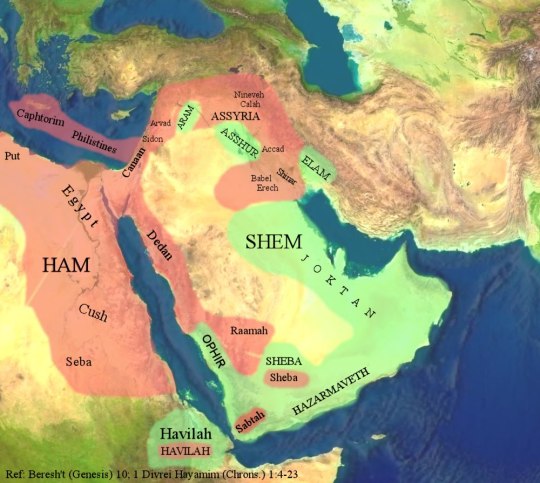
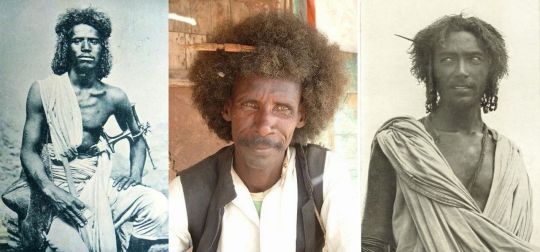


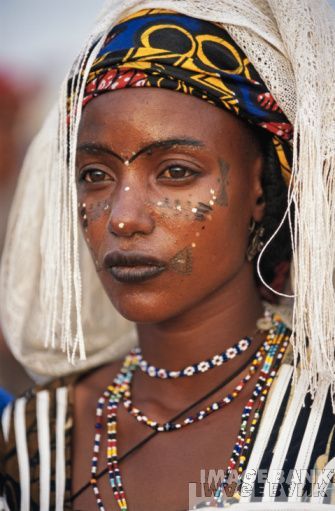

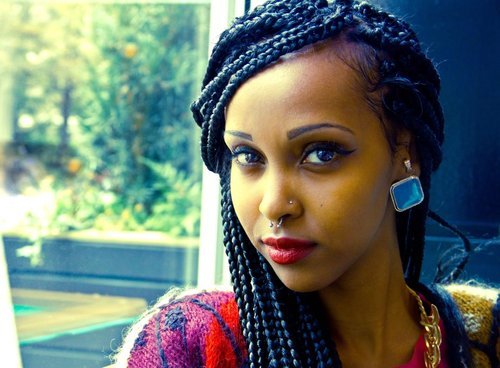
Hamitic is an historical term for the peoples supposedly descended from Noah’s son Ham, paralleling Semitic and Japhetic. It was formerly used for grouping the non-Semitic Afroasiatic languages (which for this reason were described as “Hamito-Semitic”). However, since, unlike the Semitic branch, these have not been shown to form an exclusive (monophyletic) phylogenetic unit on their own, the term is obsolete in this sense.
In the 19th century, as an application of scientific racism, Europeans classified the “Hamitic race“ as a sub-group of the Caucasian race, alongside the Semitic race, grouping the non-Semitic populations native to North Africa, the Horn of Africa and South Arabia, including the Ancient Egyptians. According to their Hamitic theory, this “Hamitic race” was superior to or more advanced than other Afrakan populations of Sub-Saharan Africa. In its most extreme form, in the writings ofC. G. Seligman, it asserted that all significant achievements in African history were the work of “Hamites” who migrated into central Africa as pastoralists, bringing technologies and civilizing skills with them. In the early twentieth century, theoretical models of Hamitic languages and of Hamitic races were intertwined.
The term Hamitic originally referred to the peoples believed to have been descended from the biblical Ham, one of the Sons of Noah. When Ham dishonors his father, Noah pronounces a curse on him, stating that the descendents of his son Canaan will be “servants of servants”. Of Ham’s four sons, Canaan fathered the Canaanites, while Mizraim fathered the Egyptians, Cush the Cushites, and Phut the Libyans.
During the Middle Ages, Europeans interpreted the story to define Ham as the ancestor of all Africans. The curse was regularly interpreted as having created visible racial characteristics in Ham’s offspring, notably black skin. According to Edith Sanders, the sixth-century Babylonian Talmud states that “the descendants of Ham are cursed by being Black and depicts Ham as a sinful man and his progeny as degenerates.”Both Arab, based on Noah and Ham in theKoran, and later European and American slave traders used this story to justify African slavery.
The Bible restricts the curse to the offspring of Ham’s son Canaan, who occupied the Levant, not to his other sons who supposedly populated Africa. According to Edith Sanders, 18th-century theologians increasingly emphasised the narrow restriction and accurate interpretation of the passage as applying to Canaan’s offspring. They rejected the “curse” as a justification for slavery
Etymology of the word “Ham”. Ham comes from a Hebrew word “Chem” or “Cham”,which means heat,hot,burnt. Cham comes from the Afrakan word “Kemet”meaning the black land because of the black soil. And not because of the color of the people,Afrakans have and always will be difference tones of brown. The blackness syndrome comes from American Afrakans. Slave masters called there slaves Black(English),Negro(Spanish),Nigger(Latin), which all means the same thing. And turn increases confusion and dislike for there own people. “Whoever is darker is more Afrakan etc”. Which is all nonsense, no race is all one skin tone. Bio diversity big word!!!!!
Coming from the majority of European views so called Hamites where more like Europeans in features, which open up doors for Afrakans to join in the battle of self racism. E.g. Europeans��� asserting that the Tutsi were superior to the Hutu. In spite of both groups being Bantu-speaking, the Tutsi were classed as “Hamitic” on grounds of their being deemed to be more Caucasoid in their facial features. And then you get the Rwanda massacres. More present in the Americas. “Or I am half European, that makes me better than you”, or “I am not full Afrakan etc”!
5K notes
·
View notes
Video
Burkinabe women are channelling the spirit of a 12th century princess
The story of Princess Yennenga is unfamiliar to the rest of the world, but between Burkinabes, especially women, it is a well-known tale.
Yennenga was an African princess who lived over 900 years ago. She was known for her horse-riding skills, strong spirit, and her bravery on the battlefield. Today, she is considered to be the mother of the Mossi people of Burkina Faso and is a cultural icon admired by Burkinabe’s.
Yennenga has a strong legacy. There are statues of her, roads named after her, and an African film award, which is known as the Yennenga Gold Stallion, and a film called Tilai, which is loosely based on her life.
In this short documentary, Burkina, All About Women, director Nicole Mackinlay Hahn, pays homage to the warrior princess and the women who admire her and channel her bravery into their daily lives. The short features a series of intimate portraits of a group of Burkinabe women– including a fire fighter, a rapper, a PhD in astrophysics candidate, a mechanic, a national swimming champion and a mushroom biologist.
“I sought to undo stereotypes of African women and their inaccurate representation in the media, by simply revealing and acknowledging the professional lives of women in Burkina Faso,” Mackinlay Hahn told Nowness. “Inspired by the legendary Princess Yennenga, they give voice to their own unique experiences.”
316 notes
·
View notes
Conversation
The Struggle Part Two:
Blacks in the 1800's: I know first hand what racism is. I am a victim of a violent diaspora and genocide, like many non-european whites around the world.
Blacks in the early 1900: I know first hand what racism is. Reconstruction of the South only led to the KKK, who stalk, torture and humiliate my family for no reason, other than or skin color. They bomb our churches, they kidnap and rape our children, they harass us to no end, even though we are a peaceful people who just want equality.
Blacks in the 1930s: I know first hand what racism is. I have seen my family members lynched and killed for trying to vote (cough my great Uncle). I have been denied the right to education since my ancestors arrival. Ethnic Cleansing/Lynching/Genocide occurs in the south everyday at this point. I fear for my life.
Blacks in the 1950s: I know first hand what racism is. Jim Crow laws. Segregation created by whites. Without Brown vs. Board of Eduction, I would not have any access to real schools. And they continue to lynch our people. Police invade our houses and kill our unarmed sons for no reason, and get away with it. The KKK has infiltrated our justice and legal system for hundreds of years now, ensuring that there is no legal justice for Blacks in America, ever.
Blacks in the 60s & and 70s: I know first hand what racism is. I have been denied equal access to Colleges despite Brown vs. Board of education. I have been denied access to equal housing even if I do have the money to buy a house in the "white" part of town. I have witnessed my leaders (Martin, Malcolm, Medgar) murdered in cold blood.... simply for fighting for whats right in this world... civil rights.
Blacks in in the 80s and 90s: I know first hand what racism is. I have witnessed the governments (Reagan) direct tactics against Black people; the contra deal, placing drugs in Black and Mexican communities. then changing laws to make sure they are placed in jail for disproportionate amounts of time. We still need to bus our children into white areas to ensure they have equal access to education. And still they will experience racism. I am denied equal access to bank loans, house loans and credit cards because of my race.
Modern era Blacks: We experience racism til this day. We are still denied equal access to schools with the removal of Affirmative Action, we are still harassed by police frequently via racial profiling, and blacks are twice as likely to be unemployed not because of skill... but because no one will hire us. We deal with the onset of White Privilege everyday with psychotic terms as "reverse racism." Even if we are college educated, the average white person believes we are a part of gangs, on welfare or live in the "ghetto" (a jewish term). We are still discriminated against by banks, police and the government as a whole. When will this end?
White People: I know what racism is. A black person was mean to me once. I once lost a job to a minority. I have to hear Blacks complain about racism all the time. Its not real. Its all about class now. I totally voted for Obama. Racism is over.
Black People: .....................................................
47K notes
·
View notes
Link
In a new post on document-dumping site pastebin, Anonymous names US Senators Thom Tillis (R-N.C.), John Cornyn (R-Tx.), Dan Coats (R-In.) and Johnny Isakson (R-Ga.) as members of the KKK. Anonymous also outed several mayors of major US cities, including Madeline Rogero of Knoxville, Tennessee; Jim Gray of Lexington, Kentucky; Paul D. Fraim of Norfolk, Virginia; Kent Guinn of Ocala, Florida; and Tom Henry of Fort Wayne, Indiana.
58K notes
·
View notes
Photo


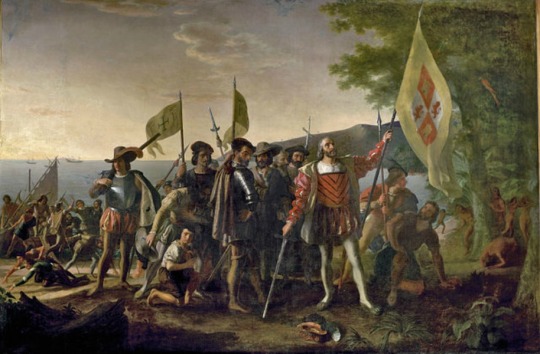




PROOF THAT AFRICANS WERE IN AMERICA BEFORE COLUMBUS!
Columbus Himself
According to renowned American historian and linguist Leo Weiner of Harvard University, one of the strongest pieces of evidence to support the fact that African people sailed to America before Christopher Columbus was a journal entry from Columbus himself. In Weiner’s book, “Africa and the Discovery of America,” he explains that Columbus noted in his journal that the Native Americans confirmed “dark brown” people had come from the south-east in boats, trading in gold-tipped spears.”
American Narcotics Discovered in Egyptian Mummies
The discovery of American narcotics in Egyptian mummies has left some historians amazed. Recently, archaeologists discovered the presence of narcotics only known to be derived from American plants in ancient Egyptian mummies. These substances included South American cocaine from Erythroxylon and nicotine from Nicotiana tabacum. German toxicologist Svetla Balabanova reported the findings, which suggest that such compounds made their way to Africa through trans-Atlantic trade that would predate Columbus’ arrival by thousands of years.
North America
For years, Eurocentric archaeologists have largely turned the other cheek when it came to the discovery of artifacts from ancient Egypt being discovered in the Americas. According to Dr. David Imhotep, the author behind the book “The First Americans Were Africans: Documented Evidence,” “Egyptian artifacts found across North America from the Algonquin writings on the East Coast to the artifacts and Egyptian place names in the Grand Canyon” are all signs of an early arrival in the Americas by Africans. This is also paired with a much earlier account of African people with incredible skills at sea. Back in 445 B.C., the Greek historian Herodotus wrote of King Ramses III leading a team of Africans at sea with astounding seafaring and navigational skills. Together, both accounts would point to Africans sailing over to the New World before Columbus.
Ancient Pyramids
Constructing pyramids was a highly specialized and complicated task that took the ancient Egyptians a lot of time to master. In ancient Egypt, there are signs of progression from the original stepped pyramid of Djoser to the more sophisticated pyramids that now stand at Giza. According to historians, it would be impossible for any group of people to have built those same complex pyramids without going through the same progression. Professor Everett Borders noted the presence of completed pyramids in La Venta in Mexico but the unusual absence of any earlier forms of the pyramids. According to Borders, it’s a sign that Africans, having already mastered the construction of pyramids in Egypt, sailed over to the New World and constructed these dual-purpose tombs and temples in the Americas.
Ancient African Skeletons Discovered in the New World
There have been many instances of archaeologists discovering skulls and skeletons that they believed clearly belonged to people of African descent. Polish professor Andrzej Wiercinski revealed the discovery of African skulls at Olmec sites in Tlatilco, Cerro de las Mesas and Monte Alban. Even more ancient African skeletons that would clearly predate Columbus’ arrival in the Americas were discovered throughout Central America and South America with some even being unearthed in what is now California.
A Clear Link in Religion
The similarities in Native American and African religions also suggest that Africans had to have had early contact with the Native Americans by sailing to the New World. Before Columbus stumbled upon the Native Americans’ land, there were prominent figures of deities with dark skin and coarse hair throughout their religion. Today, many surviving portraits reveal these deities who were clearly crafted in the likeness of Africans. Historians also point to wall paintings in caves in South America that depict the ancient Egyptian “opening of the mouth” and cross libation rituals.
The Accounts of Other European Explorers
Christopher Columbus wasn’t the only European explorer who made note of an African presence in the Americas upon his arrival. Historians revealed that at least a dozen other explorers, including Vasco Nunez de Balboa, also made record of seeing “Negroes” when they reached the New World. The accounts match up with the reports from the natives in Mexico. Nicholas Leon, an eminent Mexican authority, recorded the oral traditions of his people and ultimately kept track of a key piece of evidence that African people made it to the New World far before their European counterparts. His reports revealed accounts from natives saying “the oldest inhabitants of Mexico were African. [T]he existence of Africans and giants is commonly believed by nearly all the races of our sail and in their various language they had words to designate them.”
Africans Were Master Shipbuilders
Some people insist that Africans couldn’t have made it to the New World first simply because they didn’t have the skill and resources to sail across the Atlantic. As it turns out, that’s completely false. Historians have discovered evidence that suggests Africans were masters at building ships and that it was actually a part of their tradition. Shipbuilding and sailing are over 20,000 years old in the Sahara, and cave wall paintings of ancient ships were displayed in National Geographic magazine years ago. With those shipbuilding skills and the navigation skills that were noted by other historians of the time, the myth that Africans wouldn’t have been able to sail to the New World becomes officially debunked. As Dr. Julian Whitewright, a maritime archaeologist at the University of Southampton, explained, the voyage from Africa on ancient ships was “quite a plausible undertaking, based on the capabilities of the vessel of the period and historical material stating it took place.”
Gigantic Stone Heads in Central Mexico
The Olmec civilization was the first significant civilization in Mesoamerica and deemed “Mother Culture of Mexico” by some historians. This civilization dominated by Africans is best known for the colossal carved heads in Central Mexico that serve as even more evidence that Africans sailed to the New World before Columbus. The heads are clearly crafted in the likeness of Africans. The same civilization that created these giant heads was also responsible for introducing written language, arts, sophisticated astronomy and mathematics to Mesoamerican civilization, ancient African historian Professor Van Sertima explained.
A Long History of Trade by Sea
According to Paul Alfred Barton, the author of “A History of the African-Olmecs: African Civilizations of America from Prehistoric Times to the Present Era,” ancient kingdoms in West Africa have a long history of trade by sail, which made it all the more likely that they eventually expanded their trade to the Americas. While the Sahara is a dry desert today, its past as a lake-filled, wet and fertile place has been well-documented. African ships often crossed these large lakes to get from place to place and traded with other African civilizations along the way. After expanding their trade to the Americas, they certainly made their mark as things like African native cotton were soon being discovered all across North America.
https://www.youtube.com/watch?v=Hu0z6zyc2J8
7K notes
·
View notes
Photo

Not to mention The small Pox blankets along with forced sterilization
America home of Sick fucks and blood soaked land
267 notes
·
View notes
Photo




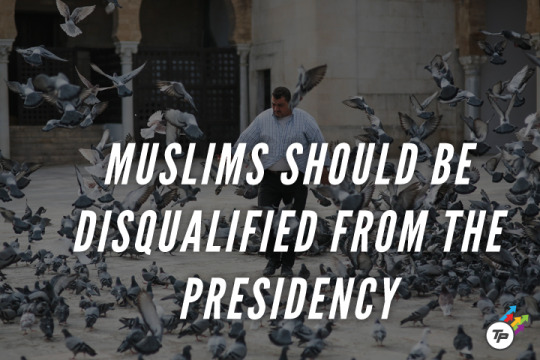




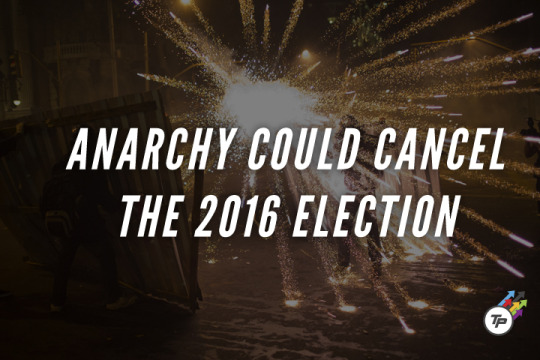
13 Ridiculous Things Ben Carson Actually Believes
Former neurosurgeon Ben Carson has become an unlikely frontrunner in the GOP presidential primary, leading recent polls in Iowa and surpassing all of the other Republican candidates’ recent fundraising totals.
Though he has never held political office, his short time in the spotlight has given him plenty of opportunity to make controversial and often factually incorrect statements. In May, ThinkProgress highlighted seven ridiculous things that Ben Carson believes. But in the past six months, Carson has come up with even more incendiary remarks and comparisons, which seem to only help his campaign.
13K notes
·
View notes
Photo


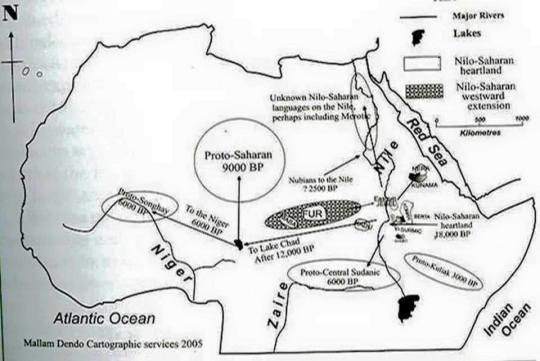
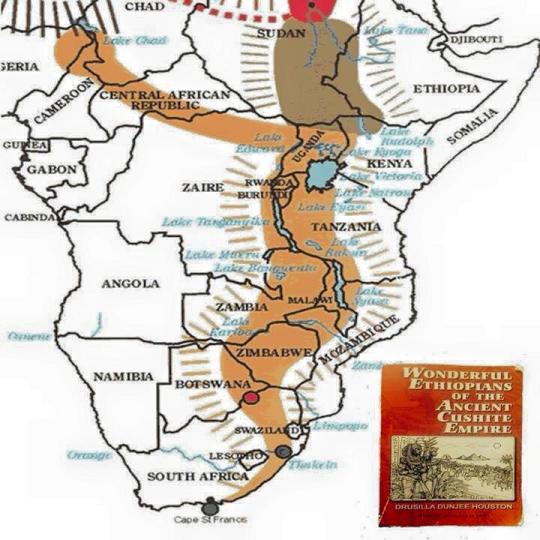

Language Families, Culture Migration Patterns,
Y-dna Markers, Heritage, Oral Tradition
Linguistics & Archaeology provides conclusive evidence that a vast dispersion of Proto-Saharan peoples dominated the archaic world. Their range extended from “Niger-Benue”, through Lake Chad, into the Nile Valley, where some went into Europe, and others across the Indus Valley, as far as the Yellow River.
The modern Latin script we’re reading in English right now, traces back to the “proto Sinaitic script. This same ‘proto Sinaitic script” derives from the “proto Saharan script”. And overall, the 'Proto Saharan’ Script is the Mother to just about all of Africa’s Languages. Through language is how Colonizers keep us divided from one another and keep our story excluded from being mentioned in world events and accomplishments.
These inscriptions of what some archaeologists and linguists have termed “proto-Saharan,” near the Kharga Oasis west of what was considered Nubia, may date back as early as 5000 B.C.
In fact, the proto Saharan script, visibly contains the most essential letters of the proto Sinaitic script, which happen to be Pi & Phi, Mu & Nu, and Alpha. [Each of these letters has affinities to the concepts of creation, spirituality, and the roots of all Religions]. Alpha is the Indo European pronunciation of the “Letter A”. The Afro Asiatic pronunciation of the “Letter A” is Alif or Al-ēēf, and the Proto Saharan pronunciation of the “Letter A” is Ilé Ifé or Ē-lay Ē-fay. Inner-standing key Lexical principals of the proto Saharan & Sinaitic script is to Inner-stand the civilized Kushite influences and contributions to science and spirituality. [Ba'al = which mean’s “The Soul of Ilé [Ē-lay]”, is a Saharan & Sinaitic observation. Even the term Allah is the Afro Asiatic pronunciation of Ilé [Ē-lay]. But more importantly, it must be known that the “Letter A represent Aleph, The Bull” and even the word Bull derives from the word Ba'al. So, Ba'al was either depicted as a Bull, or the “Letter A Symbol”]. The Holy Cow, Bull & Calf represents the Feminine and Masculine aspects of Manifestation and Creation of the Universe. Anu - Bull God - Ba'al - Apis - Ausar - Osiris - Orion Anum - Heavens - The Ethereal
The terms Kushite and Ethiopian are just about synonymous. In antiquity, the Ancients called Persia, Media, Elam, Aria and the entire area between the Tigris and Indus river, Kush. Classical literature makes it clear that the region from Egypt to India was called by the name “Æthiopia”. Graeco-Roman writers makes it clear that there were two Kushite Empires, one in Asia and the other in Libya/Africa. In these times Romans referred to Arabia as Kusan. Homer, Herodotus, and Strabo called Persia “ÆTHIOPIA”. Homer even alluded to the two Kushite empires when he wrote, “A race divided, whom the sloping rays: the rising and the setting sun surveys”.
Kassi - Khatti - Hatti - Hittites Kassites - Chief Rulers of Iran Kushdwia - Hindu Kush Kishkinthai - S.India Cissia - Cissian - Susian - Susa - Elamites Qushani - Kushans - Parthians & Bactrians Ku-shih - Tibet K-San - China Kusan - Country east of Kerma(Nubia) - Arabia
Ancient sub-Saharan African Skeletons found in Mesopotamia and craniometric data teaches us that continuity existed between ancient & medieval sub-Saharan Africans in Mesopotamia. And, Linguistic evidence makes it clear that a genetic relationship exist between Dravidian [Tamil], Elamite and the Niger Congo [Mande] languages.
If we trace back all the major languages of the Kushite routes, we can find that all of them have Proto Saharan roots, even the Indo European language family. Proto Saharan - Nilo Saharan Proto Sinaitic - Afro Asiatic Niger Congo - Mende & Kongo Indo European - Kassi Cissia & Qushani
“Where the south declines towards the setting sun lies the country called Ethiopia, the last inhabited land in that direction. There gold is obtained in great plenty, huge elephants abound, with wild trees of all sorts, and ebony; and the men are taller, handsomer, and longer lived than anywhere else. The Ethiopians were clothed in the skins of leopards and lions, and had long bows made of the stem of the palm-leaf, not less than four cubits in length. On these they laid short arrows made of reed, and armed at the tip, not with iron, but with a piece of stone, sharpened to a point, of the kind used in engraving seals. They carried likewise spears, the head of which was the sharpened horn of an antelope; and in addition they had knotted clubs. When they went into battle they painted their bodies, half with chalk, and half with vermilion… .” Herodotus’ descriptions matches the descriptions of the Bantu-Lanuage speakers heritage, such as the Zulu traditions. It’s time for Africans to Wake-Up NOW. Get back to the sources.
language family.
Always remember, “Proto Saharan” came first. We are Proto Saharan Kushites. We brought the world Sacred Geometry, Planetary Alchemy, Cosmic Electromagnetism, Biology & Medicine, Spirit Rituality and Art. And most importantly, the ElectroMagnetic AlphaBet is Kushite Science, now we need to turn to our Golden Ages.
Words of the Greek Traveler/Historian, Herodotus:
“Where the south declines towards the setting sun lies the country called Ethiopia, the last inhabited land in that direction. There gold is obtained in great plenty, huge elephants abound, with wild trees of all sorts, and ebony; and the men are taller, handsomer, and longer lived than anywhere else. The Ethiopians were clothed in the skins of leopards and lions, and had long bows made of the stem of the palm-leaf, not less than four cubits in length. On these they laid short arrows made of reed, and armed at the tip, not with iron, but with a piece of stone, sharpened to a point, of the kind used in engraving seals. They carried likewise spears, the head of which was the sharpened horn of an antelope; and in addition they had knotted clubs. When they went into battle they painted their bodies, half with chalk, and half with vermilion… .” Herodotus’ descriptions matches the descriptions of the Bantu-Lanuage speakers, such as the Zulu traditions. It’s time for Africans to Wake-Up NOW. Get back to the sources.
https://www.youtube.com/watch?v=Hu0z6zyc2J8
319 notes
·
View notes
Photo

https://www.youtube.com/watch?v=Hu0z6zyc2J8
57 notes
·
View notes
Conversation
white people: don't hit your kids! that's not discipline that's abuse! an adult should never put their hands on a minor
*black teen girl gets abused by cops*
white people: we don't know what she did...
white people: maybe she was being unruly?
white people: SHE DESERVED IT
61K notes
·
View notes










